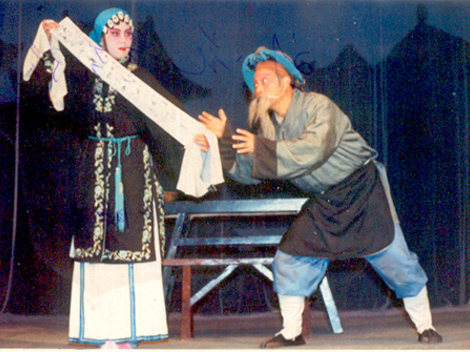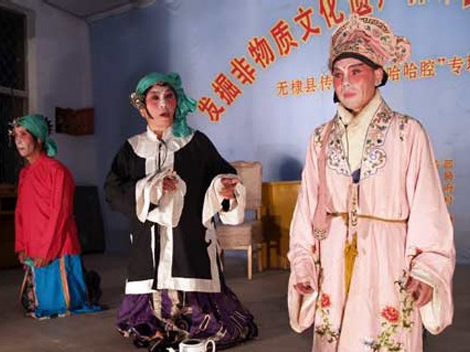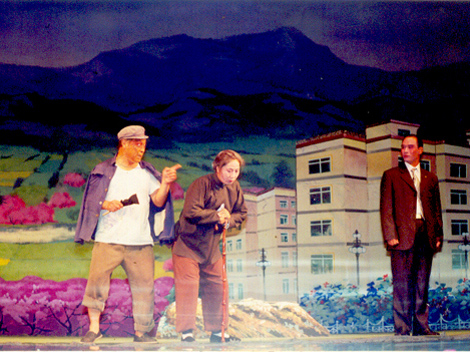
Haha Tone, which is also known as "Hehe Tone", "Liuzi Tune" and "Lala Tune", is a local genre of opera derived from the countryside in Hebei Province. It has a history of 300 years. Being prevailing in Baoding, Cangzhou, Hengshui and Shijiazhuang in Hebei Province as well as Huimin and Dezhou Region in Shandong Province, Haha Tone is featured by primitive performance, featured singing, and emphasized narration and recital.

Originally as a name of a folk song, Haha Tone was described in a quodlibet named Wandering in Temple (a passage of The Romance of the Western Chamber) which was included in the Twenty Nine Genres of Quodlibet, a Beijing-version transcript finished in Jiaqing Reigning Period of the Qing Dynasty. Legend has it that Haha Tone is evolved from Liuzi Tune, for Liuzi Tune has been sung in such repertoires as Banishment of Qinqiong, Notes of Jinsuo, Taihang Mountains and Teahouse. It is also held that Haha Tone is stemmed from Yangko which was prevalent in Zhuozhou, Cangzhou and the neighboring region. Roughly formed in the late Ming Dynasty and the early Qing Dynasty, Haha Tone had become popular in the capital and other places in Qianlong Reigning Period of the Qing Dynasty.

As a result of different characteristics of dialects and influence of folk art, Haha Tone was gradually broken down into East School, Middle School and West School with varied artistic styles and musical features. Spoken part of each school was impacted by respective dialect. Banhu fiddle (a bowed stringed instrument with a thin wooden soundboard) was used as main musical instrument in all schools. However, the function of flute was stressed in the West School, with more distinct characteristics of folk blow-beat music (an ensemble of Chinese wind and percussion instruments).
Performance of the native-born Haha Tone is jointly finished by Sheng (positive male role), Dan (positive female role), Jing (supporting male role), and Chou (clown), with young male role and young female role as the major roles. Performance of the entire genre of opera is featured by delicacy, vividness, easiness and humor, with each role frequently presenting amusing acts and humorous singing and recital. Accordingly, Haha Tone is a genre of opera with the performing style of comedy.
Aria and accompanied music are the most distinct features of Haha Tone. Aria is a type of accented beat, which is characterized by intersection of various soundboards and most frequent use of flowing soundboard. Therefore, flowing soundboard is the core soundboard in Haha Tone. Accompaniment of the West School has the most apparent features, for its rhythm and cadence are usually liberated from the aria, and a special effect of accompaniment is created by unchanged continuous use of a fixed rhythmic tone. This method of accompaniment was referred to by elderly actors as "Little Bicker".
Haha Tone has over 100 traditional repertoires, all being endowed with the style of comedy. Representative repertories include Wang Xiao's Fowling, Three Courtesy Calls in Wedding Hall, Romance of Double Lanterns, Li Xianglian's Selling Pictures and Notes of Golden Lock. With intense rural flavors and understandable skits, they are extremely popular with farmers, especially women in the countryside.